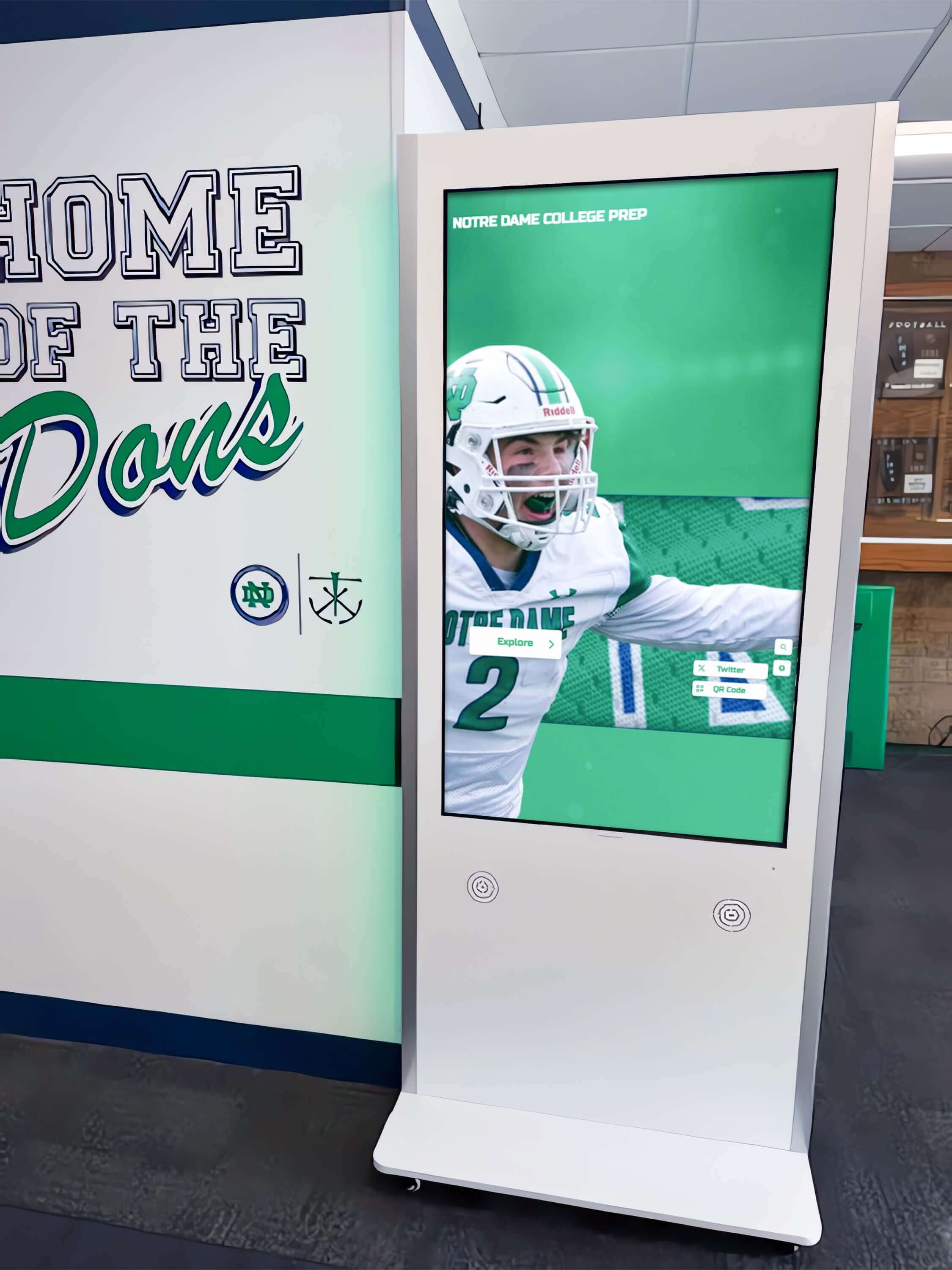Key Takeaways
Comprehensive guide to choosing the best touchscreen displays for schools in 2025. Expert insights on classroom interactive panels, recognition displays, and implementation strategies.
Schools face unprecedented choices when selecting touchscreen displays for educational environments. From interactive flat panels transforming classroom instruction to recognition displays celebrating student achievement in hallways, the right touchscreen technology enhances learning while building school culture. Yet with dozens of manufacturers, countless specifications, and budgets ranging from thousands to tens of thousands of dollars, making informed decisions proves challenging.
This comprehensive guide examines everything schools need to know about touchscreen displays in 2025—from understanding different technology types and evaluating leading manufacturers to implementing systems that deliver lasting value across classroom and common-area applications.
Understanding Different School Touchscreen Applications
Not all touchscreen displays serve the same purpose in educational settings. Before evaluating specific products, schools must clarify their primary use cases and requirements.
Classroom Instructional Displays
Interactive displays in classrooms replace traditional whiteboards and projectors with dynamic, touch-enabled surfaces facilitating instruction, collaboration, and engagement. These systems prioritize educational software integration, multi-user touch capabilities, wireless connectivity, and durability under intensive daily use by multiple classes.
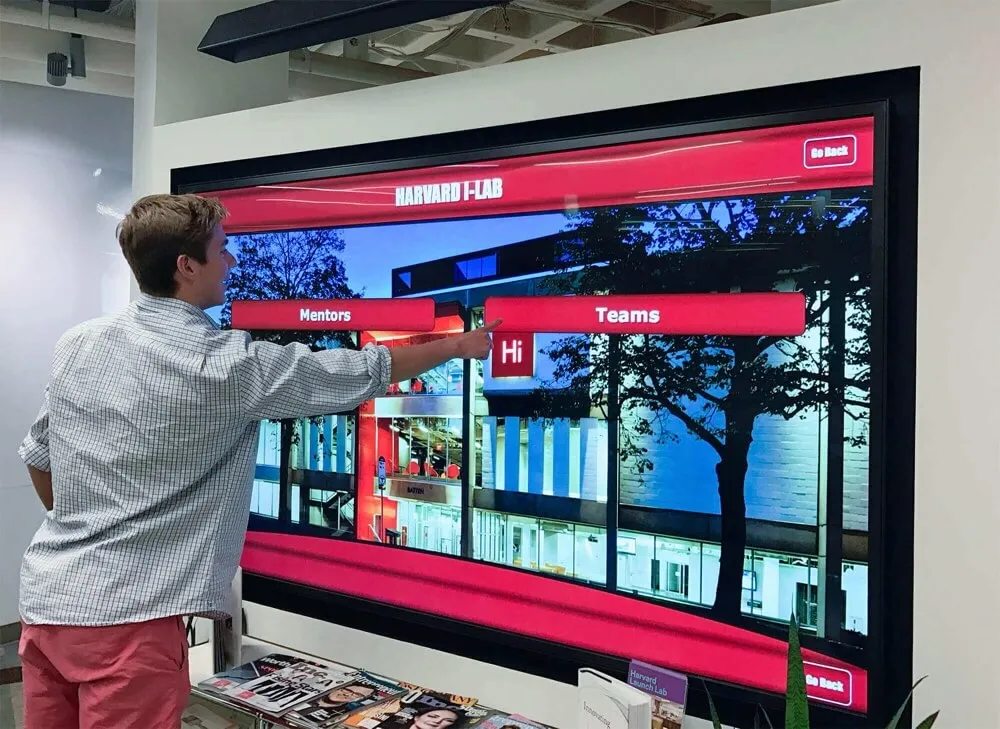
Leading classroom solutions include interactive flat panels from established educational technology manufacturers offering comprehensive software ecosystems, professional development resources, and support structures designed specifically for K-12 and higher education environments.
Recognition and Engagement Displays
Beyond classrooms, schools increasingly deploy touchscreens in hallways, lobbies, and common areas for entirely different purposes: building school culture, celebrating achievement, sharing information, and creating engagement opportunities outside structured instruction. These installations prioritize visual appeal, self-service interaction, content management simplicity, and recognition capabilities that traditional trophy cases cannot provide.
Solutions like Rocket Alumni Solutions specialize in these applications, providing purpose-built platforms designed for celebrating student and alumni accomplishments through interactive, searchable displays accessible both on campus and online.
Key Specifications for School Touchscreen Displays
Understanding technical specifications helps schools evaluate options and make informed purchasing decisions aligned with their specific needs and budgets.
Display Size and Resolution
Classroom Applications: Most standard classrooms accommodate 65-86 inch displays, with specific sizing based on room dimensions and furthest viewing distance. Calculate appropriate size by ensuring students at the back of classrooms sit no more than 2.5 times the diagonal screen measurement away. For example, a 75-inch display works well for viewing distances up to approximately 16 feet.
Resolution: 4K (3840x2160) has become the standard for educational displays, providing crisp text and detailed graphics visible from all classroom positions. Higher resolution proves particularly important for reading-intensive content and detailed visual materials.
Common Area Applications: Recognition and information displays in hallways typically range from 43-75 inches depending on viewing distance and traffic patterns. These installations often benefit from portrait orientation for displaying individual profiles and achievements vertically, though landscape orientation suits multimedia content better.
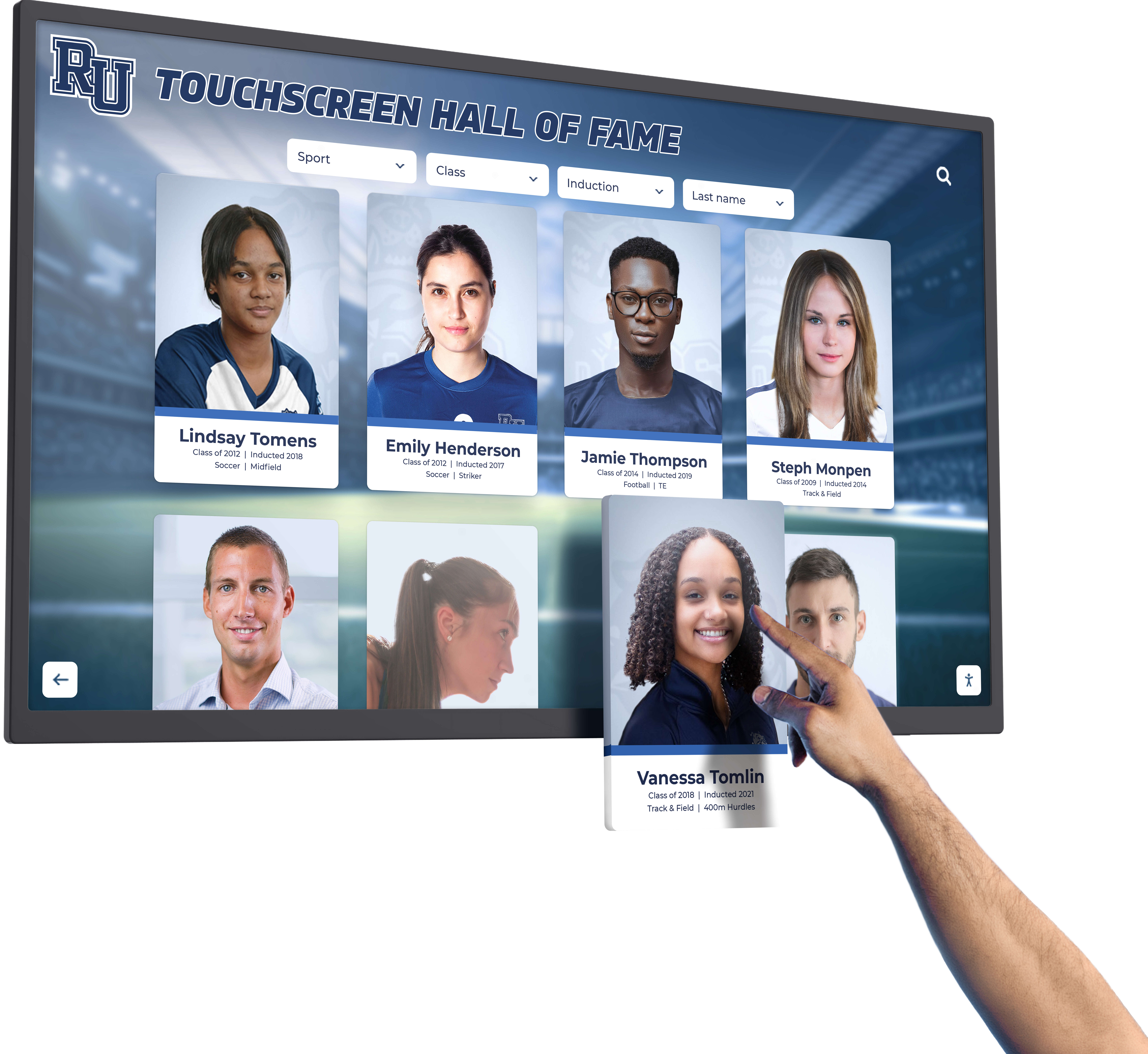
Touch Technology Types
Infrared Touch: Most large-format educational displays use infrared technology detecting touch by interrupting beams of light across the screen surface. Infrared touch works with fingers, styluses, or any object, supports excellent multi-touch capabilities (typically 20+ simultaneous touch points), and proves cost-effective for large displays. However, infrared systems feature slightly raised bezels around screen perimeters and can experience issues with direct sunlight or very bright ambient light.
Capacitive Touch: Smartphone and tablet technology uses capacitive sensing detecting electrical conductivity changes from fingers. Capacitive screens offer smooth glass surfaces with minimal bezels, generally more responsive touch recognition, and sleeker aesthetics. They require conductive styluses rather than passive pens and carry higher costs for large-format implementations.
For most school applications, both technologies perform adequately. Base selection on other factors like manufacturer ecosystem, support quality, and total cost rather than touch technology alone.
Multi-Touch Capabilities and Response Time
Multi-Touch Support: Classroom applications benefit from 10-20 simultaneous touch points enabling multiple students to interact concurrently during collaborative activities. Recognition displays typically need only 2-6 touch points since users generally interact individually or in small groups.
Response Time: Modern displays should exhibit touch response under 10 milliseconds. Delays beyond this threshold create frustrating lag between touch input and screen response. Test response time during evaluation rather than relying solely on manufacturer specifications, as real-world performance sometimes differs from laboratory measurements.
Commercial-Grade Durability Requirements
Consumer televisions and tablets aren’t designed for institutional environments with intensive daily use by hundreds of people. Commercial-grade educational displays offer critical advantages including hardened tempered glass surfaces (typically 6-7mm thick) withstanding thousands of touches without degradation, panels rated for 16-24 hour continuous operation, expected lifespans exceeding 50,000 operating hours (approximately 10-15 years of typical school use), and comprehensive warranties typically covering 3-5 years.
Attempting to save money with consumer-grade equipment almost always proves false economy as devices fail prematurely, requiring expensive replacements that eliminate initial savings while creating frustration and lost instructional time.
Leading Classroom Interactive Display Manufacturers
Several companies have established themselves as trusted providers of educational interactive display technology, each offering distinct features and benefits worth considering.
SMART Technologies
As pioneers in interactive classroom technology, SMART Boards remain among the most recognized names in educational displays. Current SMART Board models feature durable construction designed specifically for heavy classroom use, intuitive multi-touch functionality feeling natural to users, comprehensive SMART Notebook and SMART Learning Suite software that thousands of educators already know, and the embedded iQ operating system providing seamless access to educational apps without requiring separate computing devices.
SMART’s educational focus extends beyond hardware to include extensive professional development resources, curriculum-aligned lesson materials, and support structures helping schools maximize technology investment.
Promethean Interactive Displays
Promethean emphasizes collaborative learning with dual-handed gesture support feeling responsive and natural. Their ActivInspire and Classflow software platforms provide robust lesson planning and delivery tools specifically designed for K-12 education, while the Titanium series includes built-in Android operating system capabilities offering flexibility in application selection.
Promethean displays support extensive teacher professional development through their certified trainer network and online learning resources helping educators transform instruction through interactive technology.
Newline Interactive
Newline offers crystal-clear 4K displays with optically bonded screens reducing glare and improving viewing angles—critical factors in classroom environments with varying lighting conditions. Their wireless screen sharing capabilities and integrated speakers create complete presentation solutions, while competitive pricing makes interactive technology accessible for budget-conscious districts.
According to EdTech Magazine, Newline is the U.S. market leader in interactive displays for the first half of 2025, reflecting growing adoption driven by reliability and value.
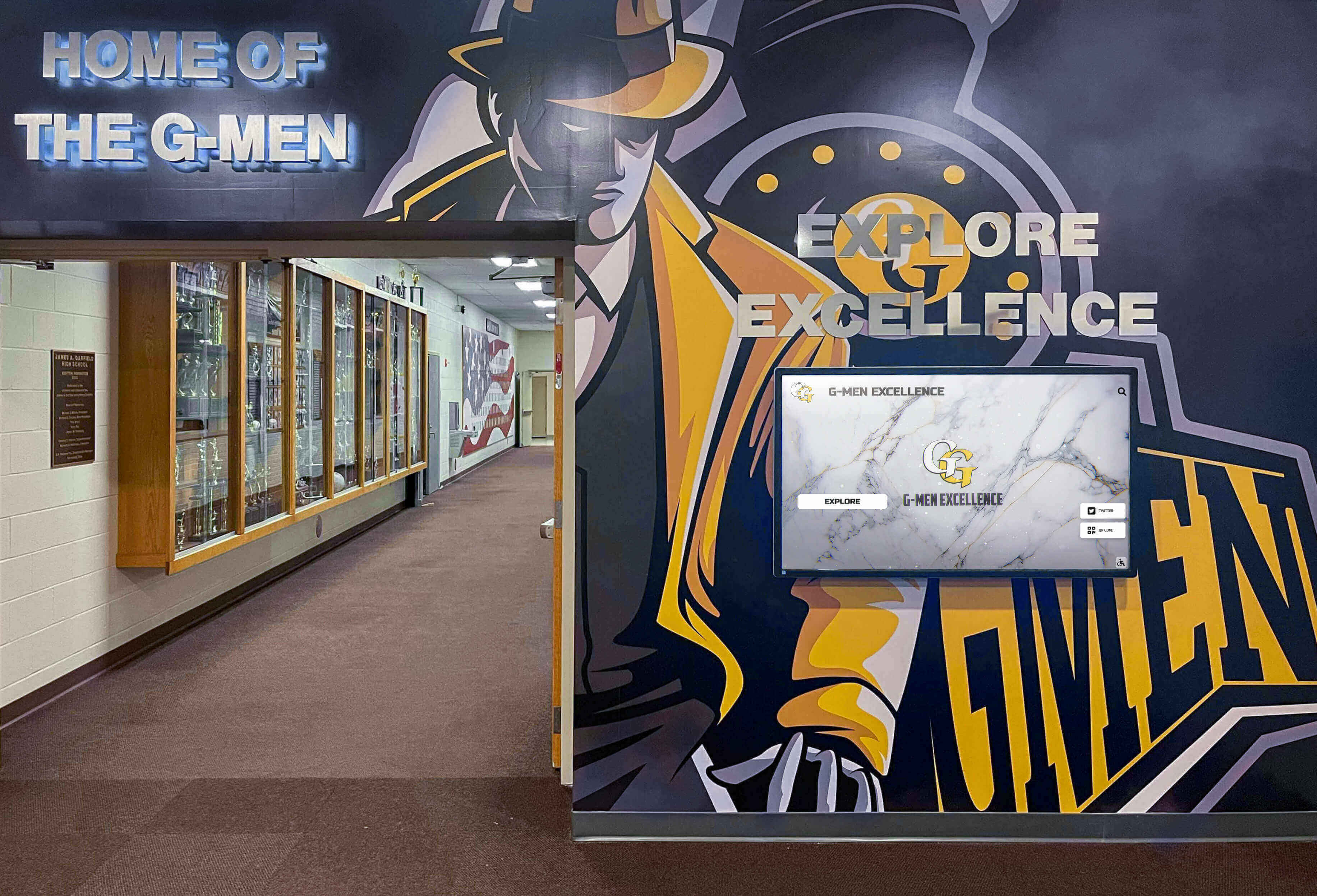
ViewSonic ViewBoards
Known for quality projection products, ViewSonic brings that expertise to interactive flat panels. ViewBoards support extensive educational app ecosystems while maintaining competitive pricing making interactive technology accessible for schools with limited budgets. Their myViewBoard software ecosystem provides collaborative digital whiteboarding with cloud-based content management.
BenQ Board Pro
The BenQ Board Pro has gained recognition for phenomenal visual fidelity and precise touchscreen technology supporting up to 40 touchpoints—well beyond what most classroom activities require but ensuring responsive performance even during intensive multi-user collaboration. Built-in whiteboarding software includes tools for various subjects and integrates smoothly with Google Classroom, particularly valuable for schools using Google Workspace for Education.
IQTouch Interactive Displays
IQTouch displays offer 4K UHD resolution with low-glare screens, support 20-point touch, and provide dual operating systems (Android and optional Windows) for maximum flexibility. According to Q-NEX Technology, teachers report IQTouch screens are more sensitive and precise than similar screens from leading brands, making them worth considering despite being less widely known than some competitors.
Best Touchscreen Displays for School Recognition and Culture Building
While classroom instruction represents education’s core mission, spaces outside classrooms—hallways, lobbies, cafeterias, common areas—provide equally important opportunities for building school culture, celebrating achievement, and creating engagement that strengthens community.
The Recognition Challenge Schools Face
Traditional trophy cases and static plaque walls face significant limitations. Physical space constraints force difficult decisions about what receives display space, updates require expensive plaque ordering and professional installation creating frustrating delays, limited capacity means many achievements never receive visible recognition, and static presentations fail to capture attention in environments where students pass quickly between classes.
These constraints create real problems. Outstanding students whose accomplishments don’t fit predetermined categories go unrecognized. Historical achievements disappear into storage when display cases fill. Alumni returning to campus can’t easily find recognition of their own achievements among crowded displays. Current students see only a fraction of what their schools and communities have accomplished.
How Purpose-Built Recognition Displays Transform School Culture
Specialized touchscreen recognition systems address these challenges through capabilities designed specifically for celebrating achievement and building community rather than delivering classroom instruction.
Unlimited Recognition Capacity: Digital platforms eliminate space constraints entirely. A single display showcases thousands of achievements, recognition entries, and historical records—content that would require dozens of physical trophy cases occupying hundreds of linear feet.
According to research on student engagement strategies, schools implementing comprehensive digital recognition report ability to honor every deserving student across academics, athletics, arts, service, and character categories. This inclusive approach demonstrates that schools value all forms of excellence, not just traditionally prominent accomplishments.
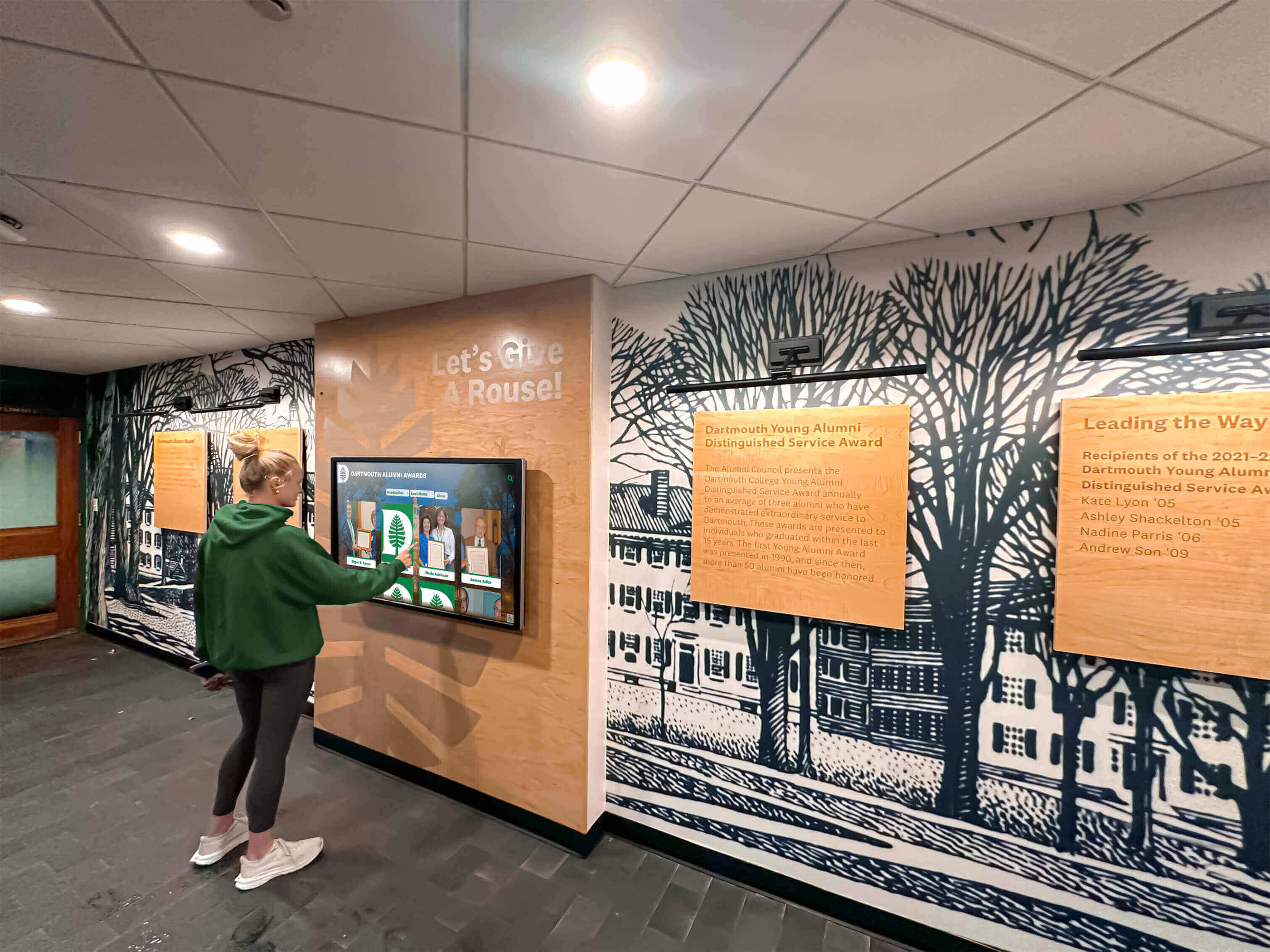
Searchable Interactive Exploration: Unlike static displays that visitors simply glance at while passing, interactive recognition displays invite active engagement. Students, families, and alumni search by name to find specific individuals, browse by category to explore particular achievement types, filter by year or graduation class, and view detailed profiles with photos, videos, and complete achievement histories.
This searchability creates personal connections impossible with traditional displays. When alumni can find themselves within seconds and explore their complete achievement histories, engagement increases dramatically compared to brief glances at traditional trophy cases.
Dynamic Content That Stays Current: Updating traditional recognition displays requires ordering new plaques, scheduling installation, and often retrofitting existing cases—a process taking weeks or months. Digital recognition updates instantly through cloud-based content management that authorized staff can access from any device.
After championship victories or academic competitions, schools add new achievements within minutes, ensuring timely recognition while excitement remains high. This immediacy reinforces achievement significance in ways that delayed physical recognition cannot match.
Multimedia Storytelling: Digital recognition transcends basic names and dates by incorporating rich multimedia content. Championship game video highlights, acceptance speeches and testimonials, team photos and individual portraits, newspaper clippings and historical documents, and statistical achievements and record breakdowns bring accomplishments to life through engaging narratives.
This multimedia approach transforms recognition from simple acknowledgment into inspiring stories that connect current students to institutional traditions while motivating future achievement.
Rocket Alumni Solutions: Specialized for Educational Recognition
While many touchscreen platforms exist, Rocket Alumni Solutions specializes specifically in educational recognition applications. This focus produces several distinct advantages for schools implementing hallway and common-area displays.
Intuitive Content Management: School staff—not technology specialists—manage recognition content through user-friendly interfaces requiring no technical expertise. Drag-and-drop functionality, template-based layouts, and bulk upload capabilities make content management straightforward even for administrators juggling numerous responsibilities.
Professional Presentation Quality: Recognition displays represent schools to students, families, and visitors. Rocket’s platform provides polished, professional presentation quality that honors achievements appropriately while maintaining consistent branding and visual identity throughout installations.
Comprehensive Support and Service: Implementing recognition technology involves more than installing hardware. Rocket provides white-glove service including initial content migration and setup, ongoing technical support and troubleshooting, regular software updates and feature additions, and consultation on recognition best practices.
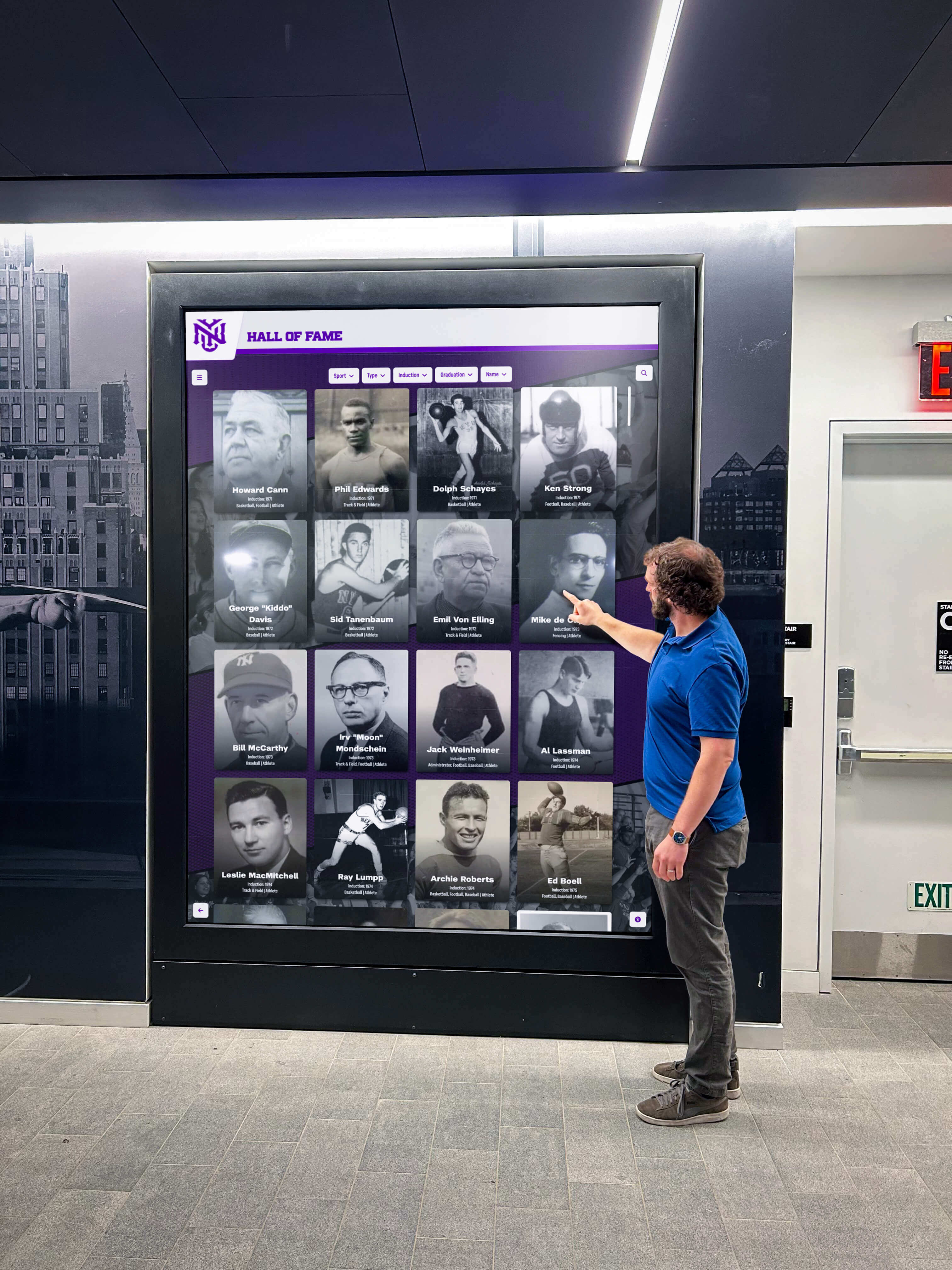
This support ensures recognition displays remain reliable, current, and effective rather than becoming outdated installations that lose relevance over time.
Mobile Companion Applications: Recognition extends beyond physical displays through mobile apps allowing alumni and families to explore achievement databases from anywhere. This global accessibility strengthens connections between alumni and their schools while providing convenient access to recognition content that might otherwise require campus visits.
Scalable for Any Institution Size: Whether implementing a single display or comprehensive networks across multiple campuses, Rocket’s platform scales appropriately. Small schools access enterprise-grade technology at accessible price points, while large districts benefit from centralized management across numerous installations.
For schools exploring ways to increase school pride through recognition, comprehensive digital displays play essential roles in building culture and community that traditional trophy cases simply cannot match.
Critical Factors in Touchscreen Display Selection
Beyond basic specifications, several additional considerations significantly impact long-term satisfaction and value from touchscreen investments.
Software Ecosystem and Compatibility
Hardware represents only half the equation. The software powering displays determines daily user experience and instructional value.
For Classroom Displays: Evaluate integrated software quality, compatibility with existing learning management systems (Canvas, Schoology, Google Classroom, etc.), availability of educational app marketplaces, wireless screen sharing capabilities supporting multiple device types, and annotation and whiteboarding features serving core instructional needs.
Schools heavily invested in specific ecosystems (Apple, Google, Microsoft) should prioritize displays integrating smoothly with those environments rather than creating additional technology islands requiring separate management.
For Recognition Displays: Assess content management interface ease of use for non-technical staff, profile and achievement organization structures, search and filtering capabilities for user-facing interfaces, multimedia support including photos, videos, and documents, and analytics providing insight into engagement patterns and popular content.
Generic digital signage platforms designed for retail or advertising typically lack the interactive depth, searchability, and recognition-specific features that educational environments require. Purpose-built solutions like touchscreen software designed for recognition deliver capabilities that generic signage cannot match.
Installation and Infrastructure Requirements
Successful deployments require adequate physical and network infrastructure supporting touchscreen operations.
Physical Installation: Professional mounting ensures displays are level, secure, and positioned optimally for viewing and interaction. Electrical work must meet code requirements with adequate power capacity and convenient outlet placement. Commercial-grade mounting hardware appropriate for display weight and size prevents accidents while enabling proper ventilation around equipment.
While DIY installation tempts budget-conscious schools, professional installation typically includes warranty protection that do-it-yourself approaches void, protecting long-term investment in expensive equipment.
Network Infrastructure: Interactive displays demand adequate network capacity. Schools should ensure sufficient bandwidth for simultaneous display use across buildings, reliable WiFi coverage in all installation locations, network security policies allowing appropriate access while maintaining student data protection, and content delivery optimization for smooth multimedia playback.
Underpowered networks create frustrating performance issues undermining confidence in otherwise excellent technology.
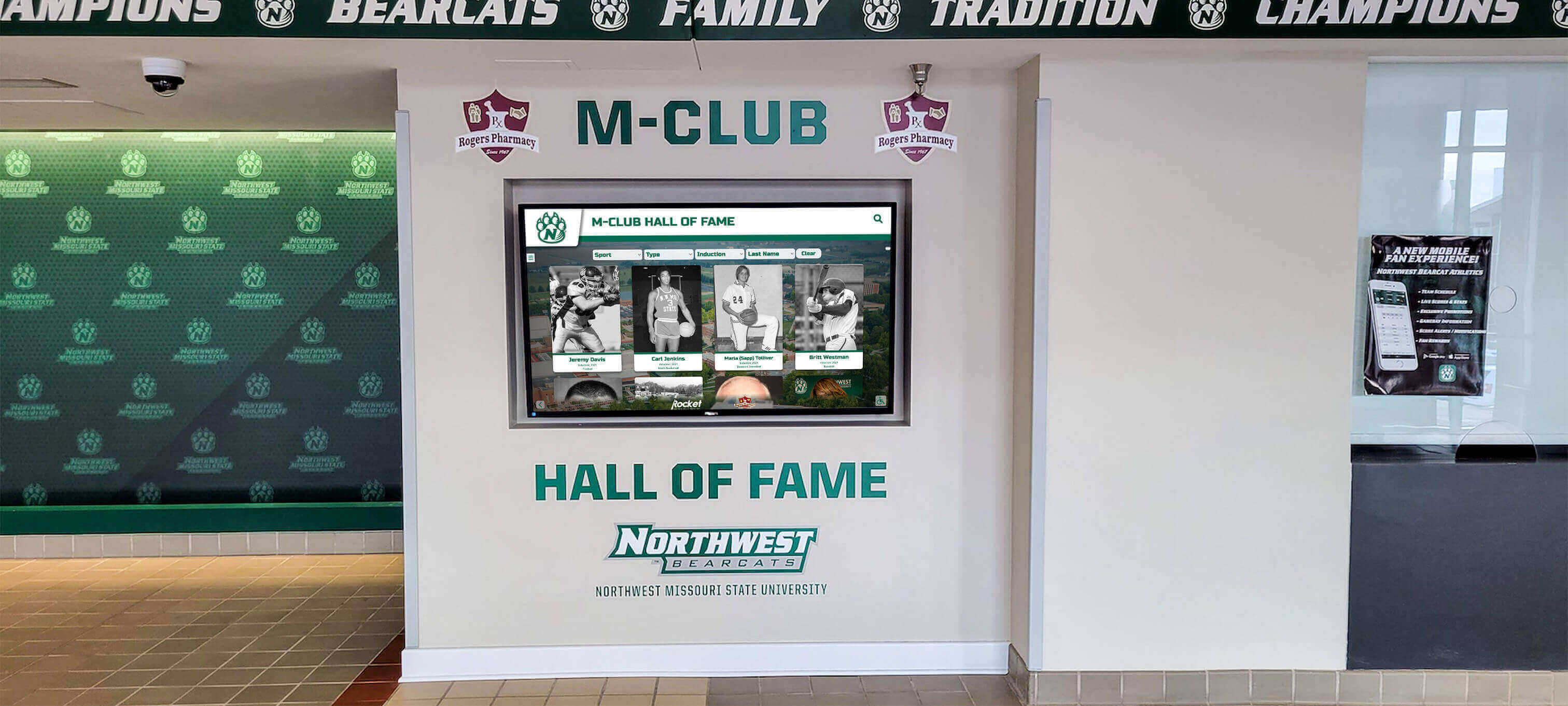
Total Cost of Ownership Analysis
Initial purchase price represents only one component of true system cost. Evaluate five-year total cost of ownership including:
Hardware Costs: Display panels, mounting equipment, media players or integrated computers, protective enclosures if required, and installation labor.
Software and Licensing: Annual software subscription fees (typically 10-15% of initial investment for recognition platforms), content management system licenses, educational app purchases or subscriptions, and cloud storage and hosting fees.
Ongoing Expenses: Electricity consumption (modern LED panels typically use 200-400 watts during operation), maintenance and repairs (budget 5-10% of hardware cost annually), technical support contracts, and staff time for content updates and system management.
Replacement Cycles: Plan for 7-10 year display lifespans for commercial-grade equipment. Consumer-grade devices fail much sooner, requiring premature replacement that eliminates apparent initial savings.
Interactive flat panels generally demonstrate lower total ownership cost than projector-based systems despite higher initial investment due to eliminated lamp replacement, reduced maintenance needs, and better long-term reliability.
Vendor Support and Service Quality
Technology quality matters less if vendors don’t provide responsive support when issues arise. Evaluate:
Training and Professional Development: What initial training comes included? Are online resources and documentation available? Do vendors offer ongoing professional development as systems evolve?
Technical Support Responsiveness: What are typical response times for support requests? Is support available during school hours? Can issues be resolved remotely or do they require on-site service calls?
Product Roadmap and Updates: How frequently do software platforms receive updates? Does vendor have clear product development direction? Will current hardware support future software features?
Installation Base and References: How many schools use this solution? Can vendor provide references from similar institutions? What do existing customers say about long-term satisfaction?
Strong vendor relationships often prove more valuable than marginal differences in specifications, as responsive support resolves inevitable issues quickly while poor support transforms minor problems into major disruptions.
Implementation Best Practices for Maximum Value
Successful touchscreen deployments extend beyond purchasing appropriate hardware. Implementation quality determines whether technology delivers promised benefits or becomes expensive installations generating brief enthusiasm before falling into disuse.
Strategic Planning Before Purchase
Define Clear Objectives: What specific problems will touchscreens solve? What outcomes define success? Which classrooms or spaces will benefit most from interactive technology?
Conduct Needs Assessment: Survey teachers about instructional needs and current technology pain points. Assess physical spaces for appropriate locations, viewing angles, lighting conditions, and infrastructure. Evaluate existing technology inventory for integration opportunities.
Develop Phased Implementation: Rather than attempting district-wide deployment simultaneously, consider staged approaches focusing initial resources where needs are greatest and impact will be most visible. Successful pilot installations build support for broader implementation while allowing refinement of content strategies and management practices.
Budget Comprehensively: Account for all costs including hardware, software, installation, training, content development, ongoing support, and inevitable contingencies. Underfunded implementations compromise results.
Professional Development and Training
Technology adoption fails when educators lack confidence using new tools. Effective professional development includes:
Initial Training: Comprehensive introduction covering basic functionality, software features, and instructional applications relevant to participants’ specific teaching contexts.
Ongoing Coaching: Follow-up support as teachers develop expertise, troubleshoot challenges, and expand their use of interactive capabilities.
Peer Mentoring: Programs pairing experienced users with newcomers, creating sustainable support networks that outlast formal training.
Collaborative Planning Time: Dedicated time for teachers to develop lessons and activities incorporating interactive features rather than expecting integration to happen during personal time.
Schools reporting highest satisfaction with interactive displays invest in comprehensive training empowering teachers to use technology effectively rather than simply installing equipment and hoping for adoption.
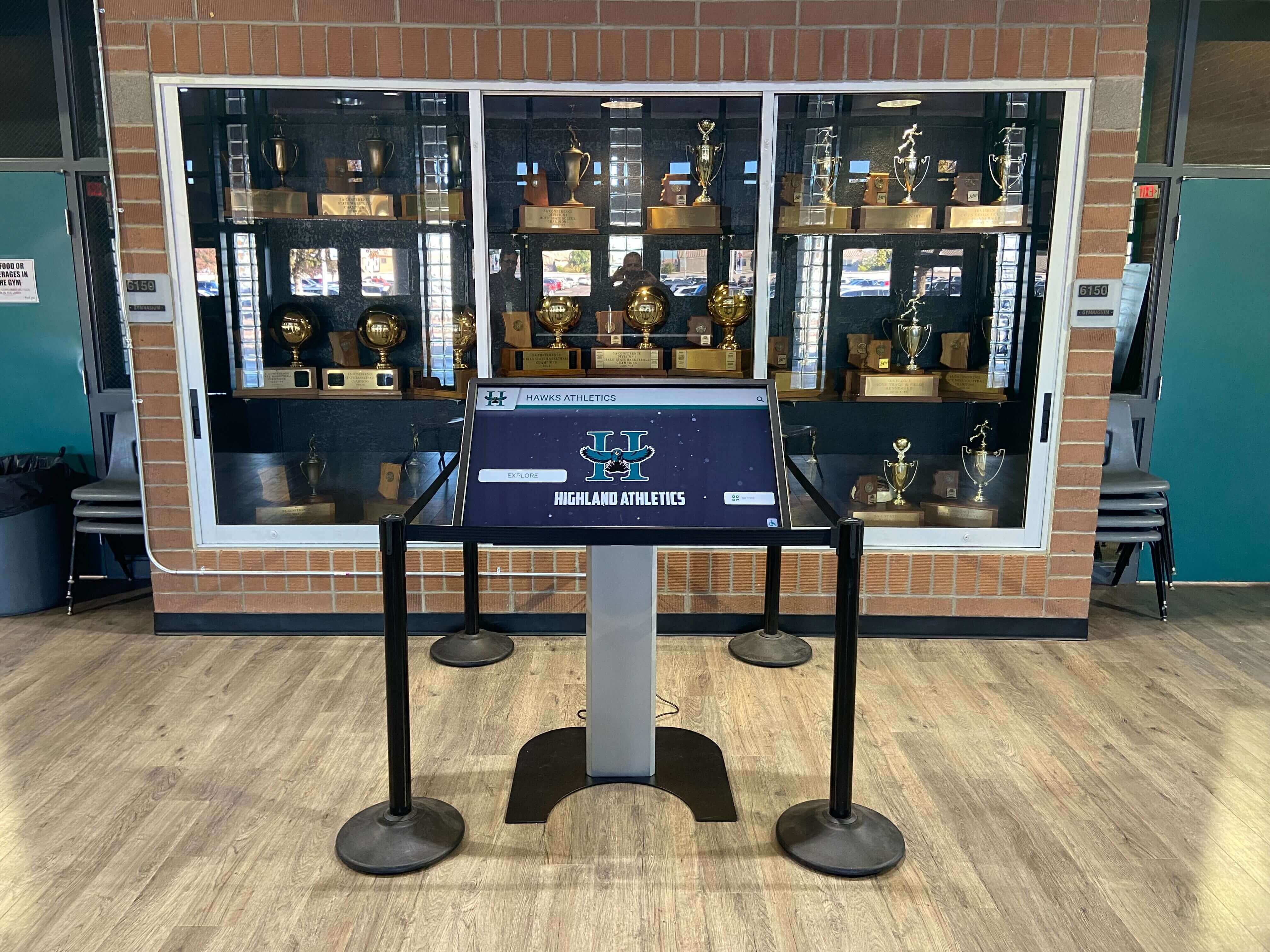
Content Development for Recognition Displays
Recognition displays require initial content development documenting institutional achievements. Successful schools follow systematic approaches:
Content Inventory: Document all current records, awards, and achievements across programs, identifying what information exists and what might be missing.
Photo Collection: Gather images from yearbooks, team photos, action shots from events, and personal collections. Aim for high-resolution images displaying well on large screens.
Historical Research: Fill gaps in older records through program archives, newspaper archives, and conversations with longtime staff and community members.
Quality Standards: Establish clear guidelines for photo specifications, text length, biographical information, and approval processes ensuring consistent professional quality.
Phased Development: Launch displays with recent achievements while gradually expanding historical coverage rather than delaying implementation until complete archives exist. Schools can add content over months and years as time permits.
For guidance on maintaining fresh content after launch, explore best practices for keeping digital recognition current year-round.
Maintenance and Long-Term Success
Interactive displays require ongoing attention ensuring continued effectiveness and reliability.
Regular Maintenance: Establish protocols for weekly cleaning using appropriate electronics-safe products, monthly inspection of mounting security and cable connections, quarterly software updates and security patches, and annual professional assessment of system health and performance.
Technical Support: Designate on-site technology coordinators, maintain vendor support contact information readily available, develop backup displays or contingency plans for critical installations, and schedule regular staff training refreshers maintaining expertise as personnel change.
Content Management: Assign clear responsibility for adding new achievements promptly, maintaining content quality standards, responding to correction requests from community members, and expanding historical coverage systematically over time.
Without designated content management responsibility, displays become outdated and lose effectiveness regardless of hardware quality or initial excitement.
Budget Considerations and Funding Strategies
Touchscreen technology represents significant investment requiring careful financial planning and potentially creative funding approaches.
Typical Cost Ranges for School Implementations
Classroom Interactive Displays: Entry-level 65-inch systems typically cost $2,500-$4,500 including basic installation. Mid-range 75-inch systems with enhanced features range $4,500-$7,500. Premium 86-inch+ systems with advanced capabilities cost $7,500-$15,000. Additional installation and infrastructure work adds $500-$2,500 per classroom depending on existing electrical and network capacity.
Recognition and Engagement Displays: Single display systems (43-55 inch) including hardware, software, and initial content development typically range $6,500-$12,000. Large format installations (65-75 inch) complete solutions cost $12,000-$20,000. Multi-display configurations for comprehensive installations range $20,000-$50,000+ depending on scope and features. Annual software and support fees typically run 10-15% of initial investment.
These ranges represent complete solutions including hardware, software, installation, initial content development, and support—not just display panel costs alone.
Funding Sources and Strategies
Operating Budgets: Annual technology allocations provide ongoing funding for gradual implementation across multiple years, spreading costs over budget cycles.
Grant Programs: Educational technology grants from federal, state, and foundation sources specifically support interactive learning tools. Strong applications demonstrate how technology addresses specific educational challenges and supports measurable outcomes.
Booster Clubs and PTAs: Parent organizations often prioritize technology directly benefiting students and building school community. Recognition displays particularly appeal to these groups seeking visible projects celebrating achievement.
Alumni Giving: Digital walls of fame create natural alumni fundraising opportunities, with recognition displays honoring donors while perpetuating giving cycles through visible appreciation.
Corporate Sponsorships: Local businesses sometimes sponsor recognition displays in exchange for appropriate on-screen acknowledgment, providing funding while building community partnerships.
Bond Issues: Major facility improvements and technology upgrades often include interactive display components as part of comprehensive modernization programs.
Many schools successfully combine multiple funding sources rather than relying on single budget allocations for large-scale implementations.
Making the Right Choice for Your School
Selecting appropriate touchscreen solutions requires evaluating multiple factors specific to institutional needs and circumstances.
Decision Framework for Classroom Displays
Consider classroom size and typical viewing distances, subject areas and teaching approaches benefiting most from interactivity, existing teacher comfort with technology and professional development capacity, budget availability and implementation timeline flexibility, and network infrastructure adequacy supporting intensive interactive use.
Schools should prioritize classrooms where interactive technology delivers greatest impact rather than attempting universal deployment overwhelming support capacity.
Decision Framework for Recognition Displays
When assessing recognition display solutions, examine software ease of use for non-technical staff who will manage content, content management flexibility and scalability as programs grow, vendor support quality and responsiveness when issues arise, integration capabilities with existing school systems and databases, mobile accessibility extending reach beyond campus locations, and total cost of ownership including ongoing expenses beyond initial purchase.
For schools exploring digital recognition board solutions, purpose-built platforms provide advantages over generic digital signage lacking education-specific features and recognition focus.
Emerging Trends in Educational Touchscreen Technology
Touchscreen technology continues evolving rapidly, with emerging capabilities promising even greater educational value in coming years.
Artificial Intelligence Integration
AI-powered features will enable personalized content recommendations based on user interests, intelligent search understanding natural language queries, automated content organization and tagging reducing manual management burden, and enhanced accessibility features including real-time translation and improved screen readers.
Enhanced Collaboration Tools
Future classroom displays will emphasize remote collaboration features connecting classrooms across distances, augmented reality integration overlaying digital content on physical spaces for immersive learning, and improved multi-device synchronization enabling seamless content sharing from various platforms and devices.
Advanced Analytics
Both classroom and recognition displays will provide deeper insights through user engagement tracking informing content strategy and teaching approaches, learning analytics revealing instruction effectiveness patterns and student comprehension indicators, and predictive features suggesting relevant content and connections based on usage patterns.
These innovations will make digital systems even more powerful while maintaining core benefits: enhancing instruction, celebrating achievement comprehensively, and strengthening educational communities.
Conclusion: Transforming Education Through Strategic Touchscreen Investment
Interactive touchscreen displays have evolved from novelties to essential educational tools enhancing instruction while strengthening school culture. In classrooms, these displays create engaging, collaborative learning environments supporting diverse learning styles, enabling real-time assessment and feedback, and providing multimedia capabilities traditional teaching tools cannot match.
Throughout hallways and common areas, recognition displays honor achievements comprehensively while building connections between students, alumni, and institutional traditions that traditional trophy cases and static plaques simply cannot create.
The best touchscreen solution for any school depends on specific needs, circumstances, and goals. Classroom instruction benefits from versatile interactive flat panels from established educational technology providers offering comprehensive software ecosystems and robust support. Recognition and culture-building applications require specialized platforms like Rocket Alumni Solutions delivering purpose-built features educational institutions need for comprehensive achievement celebration.
Schools successfully implementing touchscreen strategies report measurable benefits including increased student engagement and participation, improved collaborative learning outcomes, enhanced school pride and stronger sense of community, and deeper alumni connections supporting long-term program sustainability.
Ready to explore how interactive touchscreen technology can transform your school? Contact Rocket Alumni Solutions to discover comprehensive solutions enhancing both classroom instruction and school-wide recognition programs. From interactive learning environments to digital walls of fame celebrating achievement, modern touchscreen technology creates educational experiences that inspire excellence while honoring accomplishment across generations.
